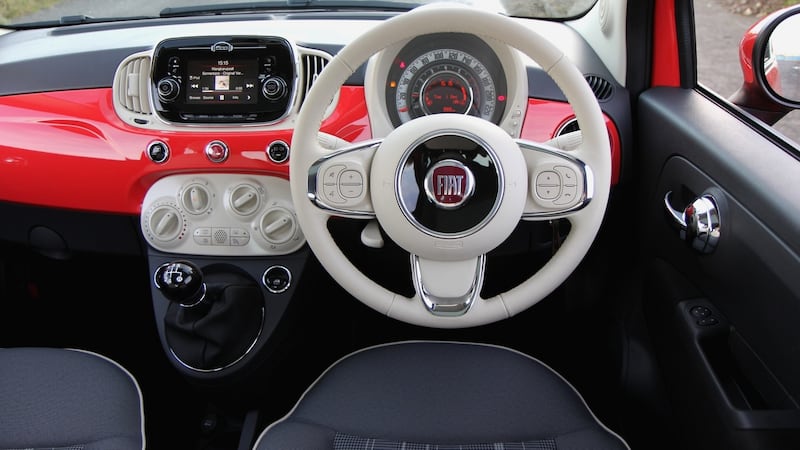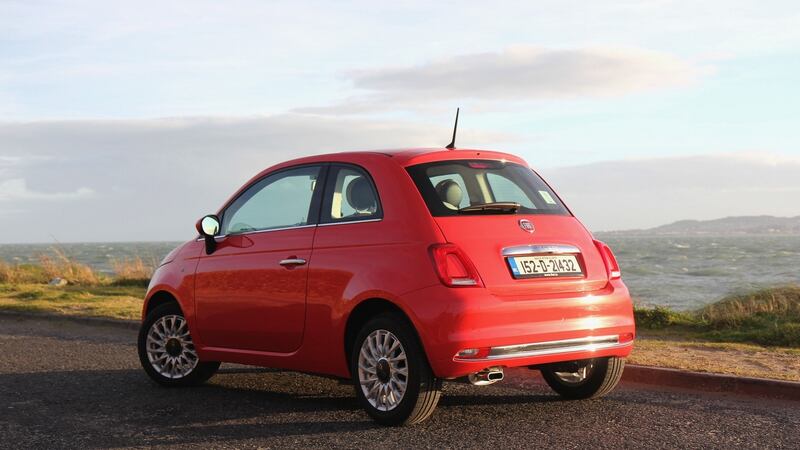Never mind how do you sold a problem like Maria? We'll leave that one to Colonel Von Trapp. No, a much bigger problem is how do you refresh and update a car such as the Fiat 500 without spoiling what made it so good in the first place? Frank Stephenson, then head of Fiat's Centro Stile (and now busy scribbling new variants of mid-engined magic for McLaren) gave Fiat both gift and millstone when he designed the 500 in 2007.
Cribbing heavily from the 1957 original, Stephenson created a really rather beguiling mix of retro and modern (mostly retro) that sparked a sales recovery which essentially saved Fiat from the bank managers. Retro design is too often just a lazy reflex, a trading on past glories, but with the 500 it just looked and felt . . . right. As if it wasn’t an old design but a design that had simply been away for a while.
So, for the 2016 model year update, Fiat has done. . . not much. At least, not visually. After all, change it too much and you could end up with an utter dog’s bolognese, so much has been left unchanged. There is a new bumper design, new lights (with high beam, low beam and daytime- running LEDs now split between two units on each side) and some rather cool new hollowed-out brake lights at the back.


Inside, the changes are a touch more obvious. There’s now a space in the centre of the dash for the uConnect touchscreen stereo and infotainment system, which at last replaces the grey rectangle radio familiar from Fiats of the late 1990s. You can order an all-digital display for that big, round instrument binnacle (and it’s worth doing – pricey but much easier to read than the too-fiddly analogue version) while there are other, expensive options including built-in internet connection for the uConnect Live services (online radio streaming, Twitter and Facebook access and more). Heck, for €1,000 you can even swathe your 500 in lovely, rich Italian leather.
Breezy colour options
Don’t, though. The 500 is one of those cars that doesn’t really benefit from the endless ladling on of equipment and extra toys. You can really go to town with two-tone colour schemes, tartan patterns for the roof, more chrome than you can safely look at on a sunny day and all manner of bright, breezy colour options. Bigger alloy wheels are to be avoided, straight away – they really knacker the ride quality, and while the leather seats are lovely, they
rob a crucial millimetre of space in the cabin, so stick with cloth. The good news is that the standard seats have been improved and are now much more supportive and comfortable if you’re built like a Wookie.
As for the choice of engines, it's again best to keep it simple. You could go for the full-house 105hp TwinAir two-cylinder 900cc turbo. It's a fantastic engine, if you love slightly complicated engines with farty exhaust notes. Screaming away with a soundtrack that's one-part demented sewing machine, one part Subaru boxer and a dash of 1/6th Ferrari V12 you coax it through its ultra-narrow power band with a six-speed gearbox and some proper Italian aggression.
It’s enormous fun and turns the 500 into a junior hot hatch (leaving aside the fact that the proper Abarth 500 is a proper hot hatch and some of the most fun you can have in a car). But the downside is that you’ll knacker your fuel economy and then what’s the point of having the more sophisticated engine?
No, go for the standard, slightly ancient, 1.2-litre four- cylinder engine. Designed when Grandpa Simpson was a lad, the 1.2 has 69hp but in a car that weighs as little as a 500 (a Lotus-like 865kg) it’s plenty pokey and really quite a sweet-revving little thing. Performance is adequate and real-world fuel consumption is likely to work out better overall than in a TwinAir.
It also removes the temptation to go for bigger alloys – sticking with the standard wheels really helps to quell the 500’s natural tendency to bounce and pogo over bumps and the result is a car which is significantly more refined, and a much nicer companion on a long journey.
It's not an enormously practical car, the 500. The VW Up or Hyundai i10 both murder it for price and spaciousness, while the similarly retro-looking Renault Twingo manages to mimic much of the 500's character while offering two extra doors and more rear seat space.
City-friendly agility
Perhaps it doesn’t matter though. The 500 will probably continue to be Fiat’s best-selling car for a while yet, and is expected to sell about
400 units next year in Ireland. Honestly, for all its faults (tiny back seats, still slightly awkward driving position) it’s very, very hard not to be utterly charmed by it.
The fact that it now comes with improved quality, more equipment, better cupholders (!) and the same mix of cutesy looks and city-friendly agility just makes it more appealing than ever. If ever you worry about it being less than practical or slightly too expensive for a very small car, just look at it – problem solved.
The lowdown: Fiat 500 1.2 Lounge
Power: 69hp
Torque: 102Nm
0-100kmh: 12.9sec
Top speed: 159km/h
Claimed economy: 4.7 l/100km. (61mpg)
CO2 emissions: 110g/km
Motor tax: €190
Price: €15,800 as tested; range starts at €13,450









